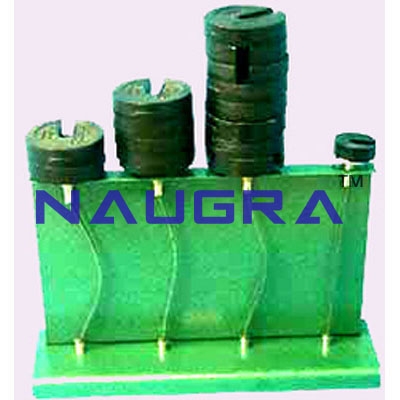- Civil Lab Mechanical Lab Engineering Lab Equipments
- sales@didacticlabequipments.com

CAT NO: DIDACTICNLE-Export-053014
Critical Condition Of Struts- Engineering Lab Training Systems.
Features Low cost, effective teaching Self-contained Bench-mounted
Demonstration of shape of a deflected strut Direct loading gives highly
visual impact of Euler theory All possible end constraints Comparison
with theoretical predictions Three year warranty Range of Experiments To
observe the behaviour of four struts of the same length but with
different end constraints when subjected to buckling loads. To compare
the result with theoretical predictions, such as Euler s formula.
Description A piece of material in compression is called a strut. If it
is short and stubby it will fail by compressive stress, but if it is
slender the failure mode is that of buckling. The load at which the
strut buckles depends on the way in which the ends are restrained.
Built-in ends resist buckling more than ends which are free to move. The
apparatus shows how the buckling mechanism occurs, and the influence of
the end restraint. The apparatus comprises a sheet metal frame which
supports four slender spring steel struts having loading platforms at
their top ends. Each strut has a different end constraint so that
comparisons can be instantly made in a highly visible way. a) Both ends
pinned b) One end pinned, the other end fixed c) Both ends fixed d)
Base fixed, top free For the first three, the ends move inwards as the
strut buckles. The loading platforms act through relatively friction
free guide bushes. This equipment is part of a range designed to both
demonstrate and experimentally confirm basic engineering principles.
Great care has been given to each item so as to provide wide
experimental scope without unduly complicating or compromising the
design. Each piece of apparatus is self-contained and compact. Setting
up time is minimal, and all measurements are made with the simplest
possible instrumentation, so that the student involvement is purely with
the engineering principles being taught. A complete instruction manual
is provided describing the apparatus, its application, experimental
procedure and typical test results.
